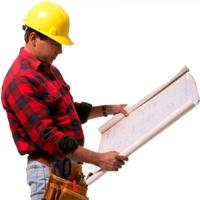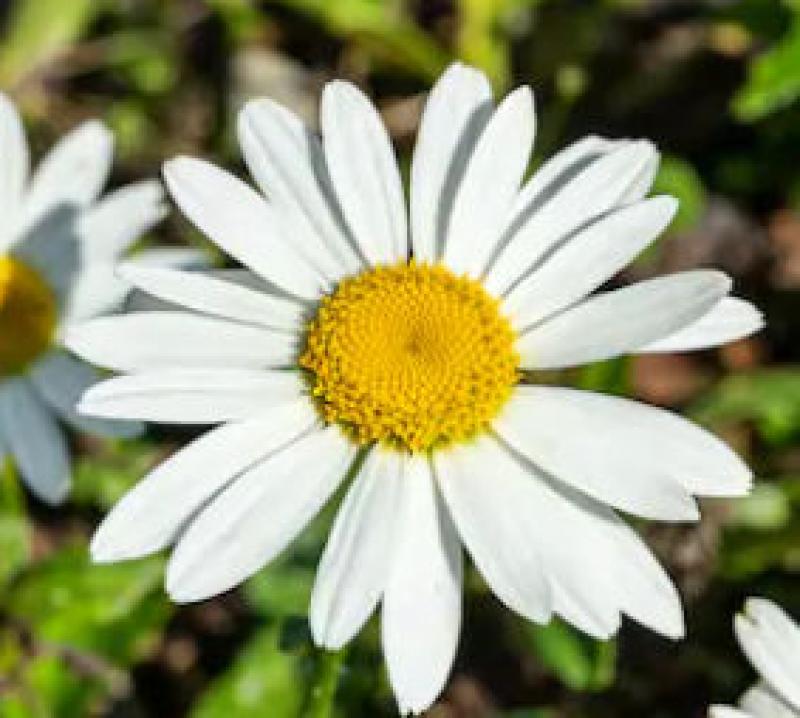The Best Types of Perennials for Beautiful Spring Planters
by Guest Post on Dec 13, 2011
That familiar chill is in the air, turning a gardener's thoughts to autumn gardening tasks. This year, as you cut back perennials and over-blanket with mulch, why not plant new perennials, as well, to enjoy next spring and summer? Late summer into early autumn is a wonderful time to fill planters and pots with perennials, and here are some reasons why (and some suggestions for the best types of perennials for planters, as well).
Planting in Autumn is Good for Perennials
Fall planting gives perennials a head start over those established in spring. Fewer insects are around to torment or damage plants in the fall. As well, autumn soil still holds heat from lovely summer days, and, during temperate fall days and nights, perennials can set down strong, healthy roots before frost arrives. By spring, root systems will be firmly established, and top growth will be vigorous and healthy.
Planting in Autumn is Good for You
We, like the earth around us, naturally slow down in autumn, as do our schedules. Fall days are perfect for puttering in the garden and settling new perennials into containers. Come the rush of spring gardening tasks, you'll be glad you planned ahead. Fall planting has the advantage of hindsight, too: With a vision of your garden and yard fresh in your mind, you will know which perennials to settle into bare spots and which shapes and colors will best accent the vignette of planters along your walkway.
Perennials Are Well Priced Late in the Season
As nurseries prepare for stocking seasonal winter bulbs and plants, they often significantly mark down remaining perennials. While fall's selection may be less than spring's, this is balanced by the attention you will receive from the unhurried, relaxed staff. Just be sure to choose plants that are hardy, healthy, and bug-free, and are good types of perennials for planters.
Tips for Fall Planting of Perennials
Follow these tips for perennials that will be healthy and happy come spring.
- Choose and place containers carefully. As your new perennials will be over-wintering in outdoor planters, opt for frost-resistant, sturdy pots. Best container choices for your perennials are plastic, wood, stone, fiberglass, resin, cement, or teak planters, hanging pots, and window boxes. To protect perennials during wintry months, use large containers with lots of protective soil around roots, move containers to sheltered spots, and cluster pots together, with more fragile plants in the middle of the groupings.
- Plant for your zone. To be sure that potted perennials come safely through the winter, consider choosing plants that are hardy in one or two planting zones colder than your own.
- Plan your containers. Take a few moments to plot your planters. Consider spacing - check the instructions that accompany each perennial to ensure it is nicely spaced and well placed. Consider the size - larger and taller plants (like poppies, dwarf coneflowers or columbines, anemones, tall ornamental grasses, or daylilies) are better behind their smaller cousins (such as dwarf or heritage veronica, campanula, and smaller chrysanthemums) so you'll be able to see and delight in each perennial. Also, consider shape - balance breadth (phlox, hosta, lady's mantle, and coreopsis, for example) with height, to give interest to the container. Choosing colors that suit and please you is essential, too. Envision, as well, your planters within your gardening plans and goals. Plant what you love, but prepare ahead to enjoy your pots and perennials to the fullest.
- Plant with Care. When transplanting your perennials, cut plants back after they have flowered, and then move to a planter. If you are purchasing perennials, water thoroughly in original containers, loosen or gently cut bound roots, and plant to the same depth as the container. Be sure to read the plant's instructions for any special needs or suggestions. Water (without soaking) regularly until frost sets in, but don't add any fertilizer until spring. Mulch the soil (and even the sides of the containers) to protect over-wintered potted perennials and, for the coldest of climes, wrap your containers (or container clusters) in plastic, burlap, or old, warm blankets or quilts, and then secure the wrap with twine.
- Plan to plant by six to eight weeks before the first hard frost. Giving perennials enough time in their new pots before winter sets in will help to establish healthy and strong root systems.
Even though the fall chill maybe nipping your nose, resist the cocooning urge for just a while longer. Autumn is such a good time to plant perennials for the coming spring, and your healthy, fall-planted perennial plants will show their thanks by blossoming beautifully next year.
Popular Articles
Three Places to Spend Money on the Exterior of Your Home
When you have the exterior of your home remodeled, you are investing, time, energy and convenience into the project and you want to make sure that...
105561 Views
Homemade Headboards-Make an Upholstered or Wooden Headboard
Homemade headboards can add a lot of personality to any bedroom. They can be coordinated with existing furniture and room decor or they can be the...
80436 Views
When to Use a Brush, Roller or Sponge Brush
Brushes are a good choice for painting trim and woodwork. They are also useful for cutting in the edges around the top and bottom edges and corners...
73053 Views
Creating a Cottage Kitchen with Bead Board
Kitchen decor can range from modern and bold to elegant and elaborate by using strategic kitchen pieces. One of the most popular decorating trends...
58844 Views
Gas Fireplace Diagnostics and Troubleshooting
Follow these steps for diagnosing and troubleshooting Gas Fireplaces repairs. For the average DIYer, this may seem intimidating, depending on the...
35833 Views
Latest Articles
Why Professional Heat Pump Installation is Key to Maximizing Efficiency and Longevity
Heat pumps are a highly efficient means of heating and cooling homes, reducing energy costs and contributing to environmental sustainability. To...
on Dec 15, 2025
Hydro Jetting Services: Unclog Your Pipes with the Power of Water
When faced with stubborn clogs and slow drains, conventional solutions often fall short. But with the innovation of hydro jetting services,...
on Dec 15, 2025
Why Professional Boiler Repair is Essential for Home Safety and Comfort
Maintaining a warm and safe home environment is paramount for any homeowner. Your home's boiler system plays a critical role in this, but what...
on Nov 5, 2025
How to Keep Your Home Warm in the Winter
How to Keep Your Home Warm in the WinterAs winter approaches, keeping your home warm becomes a priority for comfort and health. Efficient heating...
on Oct 29, 2025
Why Reliable Furnace Repair is Essential for Winter Comfort
As the cold season approaches, homeowners recognize the critical role that a well-functioning furnace plays in ensuring a warm and cozy living...
on Oct 29, 2025
Featured Articles
What Type of Licensed Contractor Should You Hire?
on Feb 28, 2017
Hire Contractors / Estimates

Looking for a specialty project? There are many types of contractors available for your home improvement needs. Finding the right type of...
Actions
Top Categories
- Garden / Landscaping / Patio — 264
- Kitchen / Bathrooms — 240
- Real Estate / Finance — 203
- Appliance / Repair — 186
- Interior Design / Decor — 184
- HVAC / Air Conditioning — 150
- Cleaning / Maintenance — 144
- Improvements / Remodeling — 131
- Plumbing / Basements — 120
- Floors / Tile / Hardwood — 116
- Safety / Security — 114
- Doors / Garages — 113
Articles Archive
More DIY Articles
6 Home Projects You Should Undertake Next
When you have just finished one project in the home, your attention usually turns to what will come next. Here are 6 options for you to consider!...
The Importance of Bond Cleaning
If you are moving out of a rental home, then you are surely aware of the importance of end of lease bond cleaning. If you leave your rental...
Creating Unity and Harmony in the Landscape
The principle of unity means the individual elements (the trees, shrubs, perennials, hardscape materials, furniture, etc) of a designed landscape...
3 Things To Know Before Hiring a Moving Company
Do you plan on hiring a moving company to move your home? We are going to cover 3 things you should carefully look over before choosing a...
Go Green in Extermination the Unwanted Ants from Your House
The dream of most people is to live in a warm climate where they can enjoy the beach all day long. Some even dream about having their own pool at...

